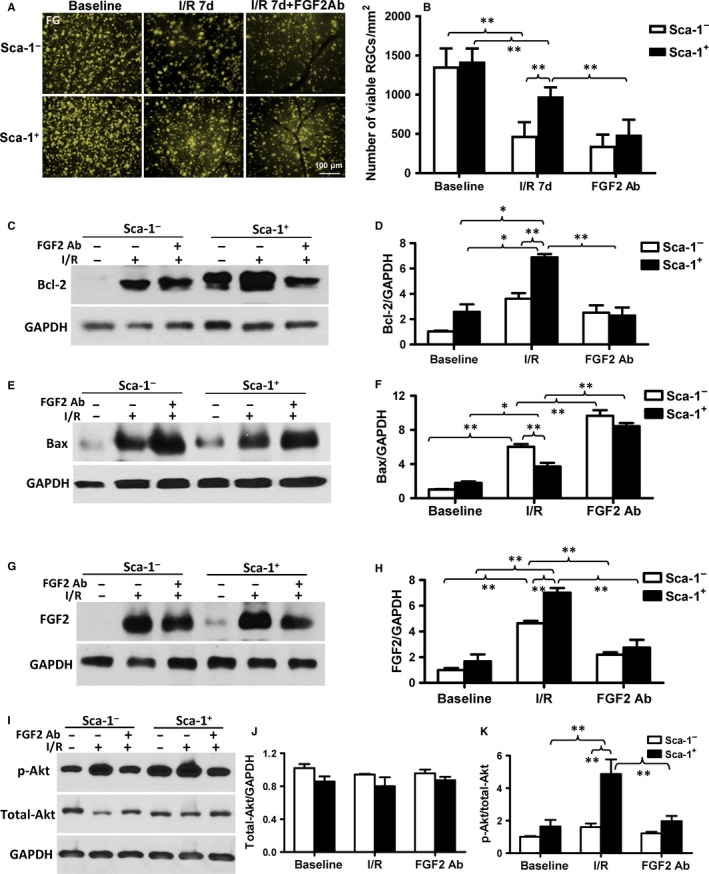Figure 7.

Blocking the FGF2 pathway reversed the effect of BM Sca‐1+ cells on retinal injury in vivo. The bone marrow (BM) of irradiated old wild‐type mice was reconstituted with 2 × 106 BM Sca‐1+ or Sca‐1− cells from young GFP (green fluorescent protein) transgenic donors, generating Sca‐1+ and Sca‐1− chimaeras, respectively. Acute ischaemia‐reperfusion (I/R) was induced 12 weeks later. The number of RGCs that survived was determined using FluoroGold‐(FG) labelling. (A) Representative images and (B) quantification of viable RGCs in Sca‐1+ and Sca‐1− chimaeras at baseline, 7 days after I/R injury, and in the presence and absence of an FGF2 (Fibroblast Growth Factor 2) neutralising antibody (Ab, n = 6/group). Bcl‐2 (C and D, n = 3/group) and Bax (E and F, n = 4/group) protein expression was evaluated by Western blot and GAPDH was used as a loading control. (G and H) FGF2 protein expression, as assessed by Western blot, was significantly greater in the retinas of Sca‐1+ than Sca‐1− chimaeras 3 days after I/R injury. However, FGF2 protein expression significantly decreased with the addition of an FGF2 Ab (n = 3/group). (I‐K) Total Akt and p‐Akt (phospho Ser473‐Akt) expression was assessed by Western blot. The ratio of p‐Akt/total Akt expression was significantly greater in the retinas of Sca‐1+ than Sca‐1− chimaeras 3 days after I/R injury. The ratio of p‐Akt/total Akt expression was significantly decreased after application of an FGF2 Ab (n = 4/group). Data analysis used two‐way ANOVA followed by Bonferroni post‐hoc tests for multiple comparisons (B, D, F, H, J and K). Data shown are mean ± SEM. **P < 0.01, *P < 0.05
